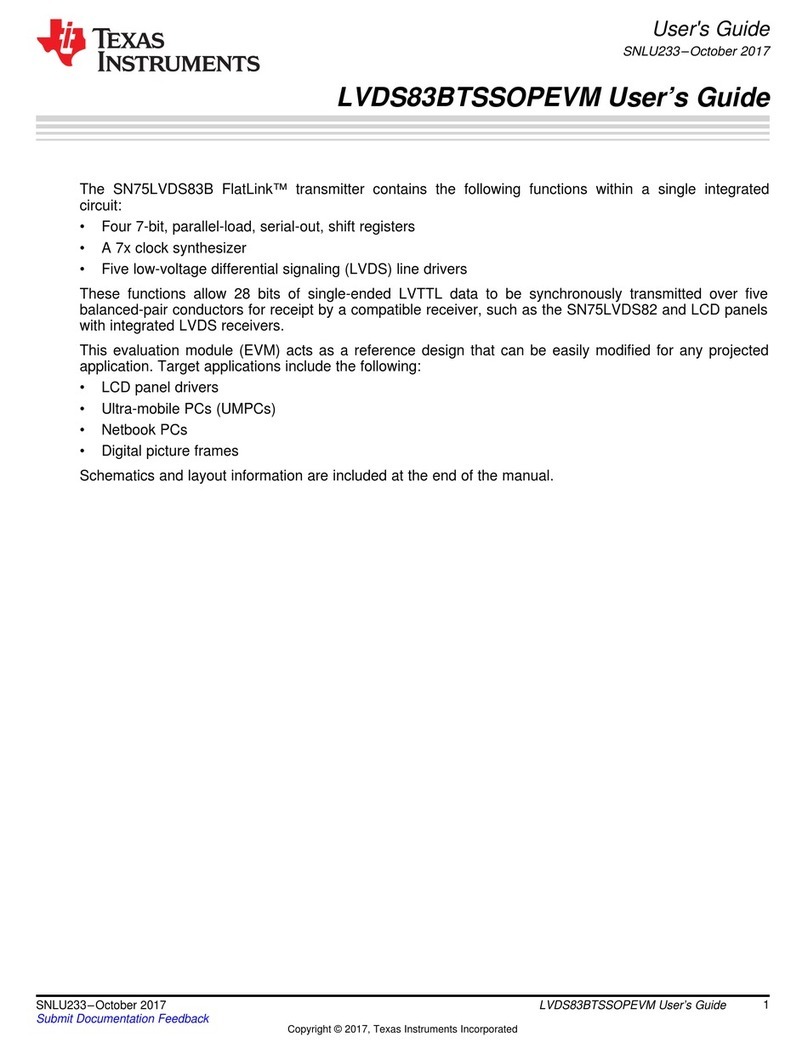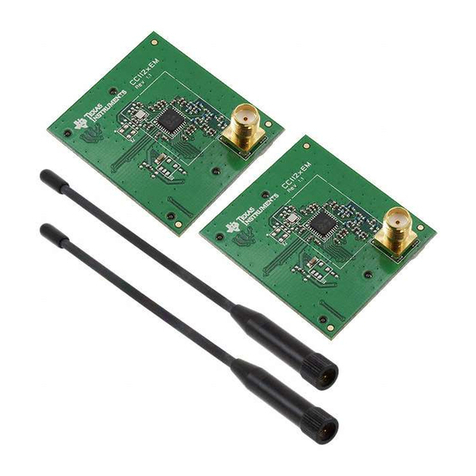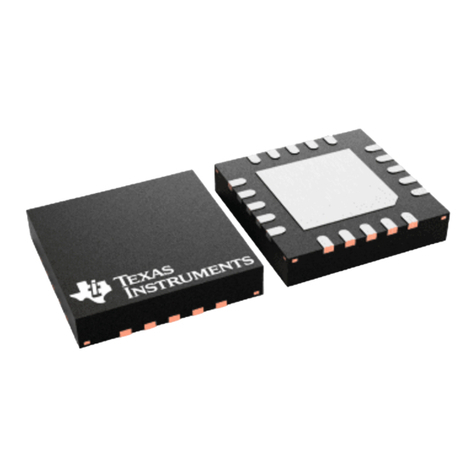
CC1150
www.ti.com
SWRS037B –JANUARY 2006–REVISED MARCH 2015
4.5 Current Consumption
Tc= 25°C, VDD = 3.0 V if nothing else stated. All measurement results are obtained using the CC1150EM reference design
(see [1] and [2]).
PARAMETER TYP UNIT CONDITION
200 nA Voltage regulator to digital part off, register values lost (SLEEP state)
Voltage regulator to digital part on, all other modules in power down
222 µA (XOFF state)
Only voltage regulator to digital part and crystal oscillator running
1.1 mA
Current consumption (IDLE state)
Only the frequency synthesizer running (FSTXON state). This
current consumption also representative for the other intermediate
7.7 mA states when going from IDLE until reaching TX, and frequency
calibration states
25.6 mA Transmit mode, +10 dBm output power (0xC4)
Current consumption, 315 MHz 14.1 mA Transmit mode, 0 dBm output power (0x60)
See more in Section 5.16 and DN012 [3].
26.1 mA Transmit mode, +10 dBm output power (0xC2)
Current consumption, 433 MHz 14.6 Transmit mode, 0 dBm output power (0x60)
See more in Section 5.16 and DN012 [3].
29.3 mA Transmit mode, +10 dBm output power (0xC3)
Current consumption, 868 MHz 15.5 Transmit mode, 0 dBm output power (0x60)
See more in Section 5.16 and DN012 [3].
29.3 mA Transmit mode, +10 dBm output power (0xC0)
Current consumption, 915 MHz 15.2 mA Transmit mode, 0 dBm output power (0x50)
See more in Section 5.16 and DN012 [3].
4.6 RF Transmit
Tc= 25°C, VDD = 3.0 V, if nothing else stated. All measurement results are obtained using the CC1150EM reference design
(see [1] and [2]). PARAMETER TYP MAX UNIT CONDITION
315 MHz 122 + j31 ΩDifferential impedance as seen from the RF-
Differential load 433 MHz 116 + j41 Ωport (RF_P and RF_N) towards the antenna.
impedance Follow the CC1150EM reference design
86.5 +
868/915 MHz Ω(see [1] and [2]).
j43 Output power is programmable, and full
range is available across all frequency
bands. Output power may be restricted by
regulatory limits. See also
DN006 [5].
Delivered to a 50-Ωsingle-ended load via
Output power, highest setting +10 dBm CC1150 EM reference design (see [1] and
[2]) RF matching network. Maximum output
power can be increased 1 to 2 dB by using
wire-wound inductors instead of multilayer
inductors in the balun and filter circuit for the
868/915 MHz band, see more in DN017 [6].
Output power is programmable, and full
range is available across all frequency
bands.
Output power, lowest setting –30 dBm Delivered to a 50 Ωsingle-ended load via
CC1150 EM reference design (see [1] and
[2]) RF matching network.
Copyright © 2006–2015, Texas Instruments Incorporated Specifications 7
Submit Documentation Feedback
Product Folder Links: CC1150






























